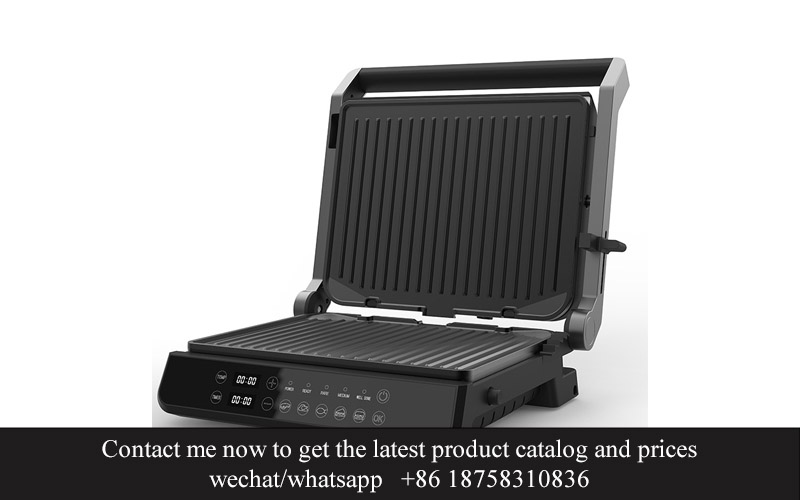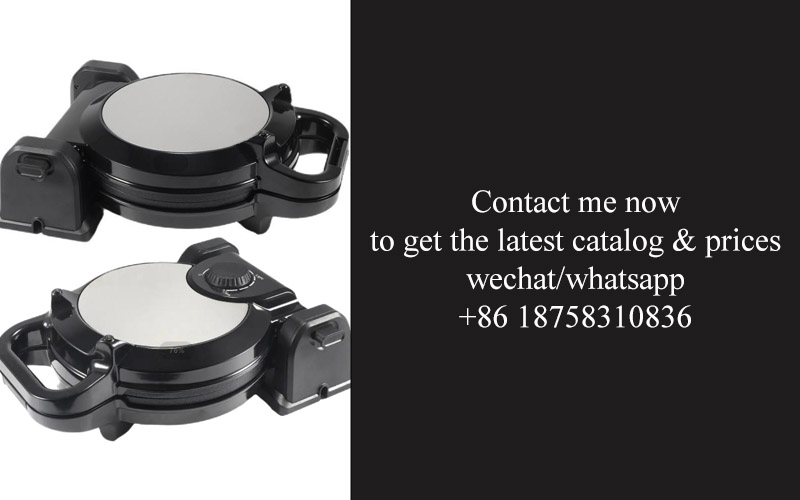Address
304 North Cardinal
St. Dorchester Center, MA 02124
Work Hours
Monday to Friday: 7AM - 7PM
Weekend: 10AM - 5PM
Address
304 North Cardinal
St. Dorchester Center, MA 02124
Work Hours
Monday to Friday: 7AM - 7PM
Weekend: 10AM - 5PM

In a world where precision and reliability are paramount, the role of medical grade stainless steel baskets cannot be overstated. These specialized tools play a critical part in the healthcare industry, ensuring that delicate procedures and patient care are supported by top-notch equipment. Today, we delve into the innovations shaping these baskets, the factories that craft them, and the profound impact they have on patient outcomes.
Medical grade stainless steel baskets have become an indispensable component in various industries, particularly in healthcare. These specialized baskets are designed to meet the stringent requirements of medical environments, ensuring safety, durability, and hygiene. In this introduction, we’ll delve into the world of medical grade stainless steel baskets, exploring their origins, applications, and the factors that make them a crucial choice for healthcare professionals.
The concept of medical grade stainless steel baskets originated from the need for hygienic and reliable storage solutions in medical settings. These baskets are crafted from high-quality stainless steel, a material known for its corrosion resistance, strength, and ability to withstand high temperatures. This combination of properties makes stainless steel the ideal choice for creating baskets that can withstand the rigors of medical use.
In healthcare facilities, medical grade stainless steel baskets serve a multitude of purposes. They are commonly used in operating rooms, pharmacies, laboratories, and patient care areas to organize and store medical instruments, supplies, and equipment. The baskets are designed with a thoughtful layout that maximizes space while ensuring easy access to contents, which is crucial during time-sensitive medical procedures.
One of the standout features of medical grade stainless steel baskets is their seamless design. This eliminates crevices where bacteria and other contaminants can hide, making them a hygienic choice for healthcare environments. The smooth surfaces are also easier to clean, further enhancing the baskets’ suitability for medical applications.
Another important aspect of these baskets is their ability to withstand the harsh chemicals used in medical settings. Whether it’s sterilization solutions or cleaning agents, medical grade stainless steel baskets are built to endure, ensuring that they remain functional and safe for use over an extended period.
The manufacturing process of medical grade stainless steel baskets is a meticulous affair. It begins with selecting the highest quality stainless steel, which is then shaped into the desired basket design. Advanced welding techniques are employed to create strong and seamless joints, while the baskets are subjected to rigorous quality control measures to ensure they meet the necessary medical standards.
The design of medical grade stainless steel baskets is not static; it is constantly evolving to meet the changing needs of healthcare providers. Innovations such as adjustable shelving, modular components, and ergonomic handles have been introduced to enhance usability and adaptability. These features allow healthcare professionals to customize the baskets to fit their specific requirements, whether it’s for storage or transportation of medical items.
In addition to their practical applications, medical grade stainless steel baskets also contribute to the aesthetic of healthcare facilities. The sleek and modern design of these baskets complements the clean and professional look of operating rooms and patient care areas, creating a more inviting environment for both staff and patients.
The market for medical grade stainless steel baskets is driven by the growing demand for high-quality, hygienic storage solutions in healthcare. As the industry continues to evolve, so does the technology used to manufacture these baskets. Advanced production techniques and materials research are ongoing, with a focus on creating baskets that are not only functional but also sustainable.
In conclusion, medical grade stainless steel baskets are a cornerstone of modern healthcare. Their ability to provide a safe, durable, and hygienic storage solution makes them an essential tool for healthcare professionals. As the industry continues to advance, the importance of these baskets will only grow, with innovations and improvements ensuring that they remain a vital component of medical environments for years to come.

In the healthcare industry, the use of high-quality medical grade stainless steel baskets holds a pivotal role. These baskets, crafted from premium materials, are not just tools of the trade; they are essential components in maintaining a clean, efficient, and hygienic environment. Let’s delve into the significance of these baskets in various aspects of healthcare.
The durability of medical grade stainless steel is unmatched. It withstands rigorous cleaning processes, making it ideal for environments where sterilization is paramount. These baskets are designed to endure the constant wear and tear of daily hospital operations, ensuring they remain reliable over time.
In surgical procedures, precision is key. High-quality stainless steel baskets provide surgeons with a stable and secure platform for delicate instruments. The baskets’ smooth surfaces reduce the risk of contamination, and their resistance to corrosion means they can be used repeatedly without losing their structural integrity.
For laboratory work, the importance of a high-quality basket cannot be overstated. These baskets are often used to hold samples, slides, or other laboratory materials during testing. The non-reactive nature of stainless steel ensures that the materials within the basket remain unaffected, providing accurate results.
In patient care, the cleanliness and hygiene of equipment are critical. Medical grade stainless steel baskets are designed with seamless construction, which minimizes crevices where bacteria can hide. This feature is particularly important in preventing hospital-acquired infections, a growing concern in healthcare settings.
The design of these baskets also contributes to their significance. They are often designed with ergonomic handles and comfortable grips, making them easy to maneuver and less likely to cause injury to healthcare professionals. This thoughtful design is a testament to the attention to detail that goes into the creation of medical-grade equipment.
Moreover, the versatility of stainless steel baskets is a significant advantage. They can be used in a variety of settings, from operating rooms to patient rooms, and even in mobile healthcare units. This adaptability ensures that healthcare facilities can maintain a consistent standard of care across all departments.
In terms of cost-effectiveness, high-quality medical grade stainless steel baskets offer a long-term investment. While they may be more expensive upfront than cheaper alternatives, their longevity means they will not need to be replaced as frequently. This reduces maintenance costs and the environmental impact of disposing of old equipment.
The precision and accuracy of medical grade stainless steel baskets are also noteworthy. The baskets are often used to hold and transport instruments and supplies, and their precise construction ensures that everything is in place when needed. This not only improves efficiency but also reduces the risk of errors, which can have serious consequences in a healthcare setting.
In addition to their functional benefits, stainless steel baskets also contribute to the aesthetic of healthcare facilities. Their sleek and modern design complements the sterile environment required in medical settings, enhancing the overall impression of a clean and professional workplace.
The importance of high-quality medical grade stainless steel baskets extends beyond their use in healthcare. They are also used in pharmaceutical manufacturing, food service industries, and even in the aerospace industry, where the same principles of cleanliness, durability, and precision apply.
The significance of these baskets is further highlighted by the standards they must meet. Manufacturers of medical grade stainless steel baskets adhere to strict regulations to ensure that their products are safe and effective. This includes compliance with international health standards and certifications, which is crucial for maintaining trust and credibility in the healthcare industry.
In conclusion, the role of high-quality medical grade stainless steel baskets in healthcare is multifaceted. They are essential for maintaining cleanliness, ensuring safety, and contributing to the overall efficiency of healthcare operations. From surgery to laboratory work and patient care, these baskets play a critical part in the delivery of quality medical services. Their significance is not just in their functionality, but also in their ability to support the broader goals of the healthcare industry.

In the realm of medical equipment, the design of stainless steel baskets has evolved significantly to meet the stringent requirements of healthcare environments. These innovations are not just about aesthetics; they are about functionality, safety, and efficiency. Here’s a closer look at some of the groundbreaking advancements in medical grade stainless steel basket design:
The integration of antimicrobial properties has become a cornerstone in the design of these baskets. By incorporating silver ions or other antimicrobial agents into the steel, manufacturers have created baskets that are inherently resistant to bacterial growth, reducing the risk of contamination in surgical and laboratory settings.
One of the most notable innovations is the introduction of ergonomic handles. These handles are designed to provide a comfortable grip, reducing the strain on healthcare workers who frequently handle these baskets. The shape and material of the handles are carefully engineered to minimize the risk of hand fatigue and potential injury.
The design of medical grade stainless steel baskets has also seen a shift towards modular construction. This allows for the customization of baskets to fit specific needs, whether it’s adjusting the size to accommodate different types of instruments or adding dividers to keep items organized. This modularity ensures that each basket is tailored to the task at hand.
Another key innovation is the use of advanced welding techniques. High-frequency welding, for instance, creates seamless joints that are not only aesthetically pleasing but also more durable than traditional welding methods. This not only enhances the overall strength of the basket but also reduces the likelihood of leaks or corrosion.
The inclusion of non-slip surfaces is another design element that has made a significant impact. These surfaces are crucial for preventing instruments from sliding around during transportation or use, which is particularly important in environments where precision is paramount.
In terms of material, the development of stainless steel alloys with higher corrosion resistance has been a game-changer. These alloys can withstand harsh chemicals and high temperatures, making them ideal for autoclave sterilization processes. The baskets are now more durable and can be used repeatedly without losing their integrity.
Designers have also focused on the basket’s internal structure, creating compartments that are not only organized but also optimized for the flow of air and steam during sterilization. This ensures that every corner of the basket is thoroughly sanitized, reducing the risk of cross-contamination.
The introduction of laser marking technology has revolutionized the way information is etched onto the baskets. This method is precise and durable, allowing for clear and long-lasting identification of contents, which is essential for traceability and inventory management.
Furthermore, the design of handles and handles themselves has been refined to be more user-friendly. Some baskets now come with adjustable handles that can be set to different heights, catering to the diverse heights of healthcare professionals. This not only improves accessibility but also enhances safety by reducing the risk of accidents due to awkward lifting positions.
The integration of smart technology is another exciting development. Some medical grade stainless steel baskets are now equipped with RFID or barcode systems that allow for real-time tracking of instruments, improving efficiency and reducing the chances of lost or misplaced items.
Lastly, the focus on sustainability has led to the creation of baskets that are easier to recycle at the end of their lifecycle. This not only aligns with environmental concerns but also reduces the overall cost of ownership for healthcare facilities.
These innovations in medical grade stainless steel basket design reflect a commitment to excellence in healthcare. By continuously pushing the boundaries of what is possible, manufacturers are ensuring that these baskets not only meet but exceed the rigorous demands of medical professionals worldwide.

In the realm of medical equipment, the role of a medical grade stainless steel basket factory is paramount. These factories are the heart of the supply chain, producing components that are not just tools but lifelines in healthcare settings. Let’s delve into the various aspects of their importance.
The precision and quality of the products these factories produce are critical. Each basket, designed for specific medical applications, must meet stringent standards to ensure safety and efficacy. These factories, therefore, are at the forefront of innovation, constantly evolving their manufacturing processes to incorporate new technologies and materials.
One key role of these factories is the customization of stainless steel baskets to meet the unique requirements of medical devices. Whether it’s for surgical instruments, laboratory equipment, or even dental tools, these baskets provide the necessary structure for precision and sterility. The ability to tailor these baskets to the exact specifications of medical devices is a testament to the factory’s expertise and commitment to the healthcare industry.
In terms of material, medical grade stainless steel is not just chosen for its durability and resistance to corrosion; it’s selected for its biocompatibility. This means that the steel used in these baskets is safe for use in the human body, minimizing the risk of adverse reactions. The factory’s role in ensuring the purity and quality of the steel is essential, as even a small impurity can compromise the integrity of the basket and the procedure it’s used for.
Safety and hygiene are at the core of every medical grade stainless steel basket. These factories adhere to rigorous cleaning and sterilization protocols to prevent contamination. The design of the baskets often includes features that make them easier to clean, which is crucial in maintaining a sterile environment, especially in operating rooms and medical labs.
The efficiency of a medical grade stainless steel basket factory is also vital. Time is a critical factor in healthcare, and these factories must be able to produce baskets quickly without compromising quality. They achieve this through efficient production lines, skilled labor, and state-of-the-art machinery. The ability to scale production to meet peak demand, such as during a surge in surgeries or medical procedures, is a testament to the factory’s operational excellence.
Innovation in design doesn’t stop at the physical aspects of the baskets. These factories are also at the forefront of integrating smart technologies into their products. For instance, baskets designed for medical imaging equipment may incorporate sensors that provide real-time data on the condition of the equipment, ensuring it remains in optimal working order. This integration of IoT (Internet of Things) technology is a significant step forward in the industry.
Another crucial aspect of these factories’ role is the collaboration with healthcare professionals. Understanding the needs and challenges faced by doctors, nurses, and other medical staff is essential for creating baskets that are not only functional but also user-friendly. This collaboration often leads to the development of specialized baskets that address specific clinical needs, from improved ergonomics to enhanced functionality.
Moreover, the logistics and distribution capabilities of these factories are pivotal. They must ensure that the baskets are delivered to healthcare facilities promptly and in pristine condition. This requires a robust supply chain management system that can handle the complexities of shipping and handling, especially when dealing with time-sensitive medical equipment.
The environmental impact of manufacturing processes is also a consideration for these factories. As healthcare becomes more eco-conscious, these facilities are increasingly adopting sustainable practices. This could include using recycled materials, reducing energy consumption, and minimizing waste. By doing so, they contribute to a greener future while maintaining the quality and efficiency of their products.
Lastly, the training and certification of the workforce in these factories cannot be overstated. The workers must be well-trained in the handling of medical grade materials and the use of advanced machinery. This not only ensures the production of high-quality baskets but also fosters a culture of excellence and continuous improvement.
In conclusion, the role of a medical grade stainless steel basket factory is multifaceted. From the design and production of custom baskets to ensuring safety, efficiency, and sustainability, these factories play a crucial role in the healthcare industry. Their dedication to innovation, quality, and collaboration is what keeps them at the forefront of medical equipment manufacturing.

In the world of medical equipment, the choice of a manufacturer can be the difference between a reliable tool and a subpar one. When it comes to medical grade stainless steel baskets, selecting a renowned manufacturer brings a host of benefits that can significantly impact healthcare facilities and the patients they serve. Here are some key advantages of opting for a respected name in the industry:
Quality Assurance: A reputable medical grade stainless steel basket manufacturer adheres to stringent quality control measures. Their products are crafted with precision, ensuring durability and reliability. This means that healthcare professionals can trust that the baskets they use will consistently perform as expected, reducing the risk of malfunctions or breakdowns.
Compliance with Regulations: The medical industry is heavily regulated, and for good reason. A renowned manufacturer is well-versed in these regulations and ensures that their products meet or exceed all necessary standards. This compliance not only protects the manufacturer’s reputation but also provides peace of mind to healthcare providers that their equipment is safe and legal.
Advanced Materials and Techniques: Top-tier manufacturers invest in cutting-edge materials and production techniques. This commitment to innovation means that their stainless steel baskets are not only made from high-grade materials but also feature innovative designs that enhance functionality and user experience.
Customization Capabilities: Every healthcare facility has unique needs. A renowned manufacturer offers customization services, allowing them to tailor the baskets to specific requirements. This could include adjusting the size, shape, or even the configuration of the basket to fit specialized equipment or procedures.
Longevity and Maintenance: Medical grade stainless steel baskets are designed for longevity. A quality manufacturer ensures that their products are not only robust but also easy to maintain. This longevity reduces the frequency of replacements, saving both time and money for healthcare facilities.
Expertise and Experience: A respected manufacturer brings years of experience to the table. Their team of engineers and designers has likely encountered and solved a variety of challenges in the field. This expertise can lead to more efficient and effective basket designs that address the evolving needs of healthcare.
Customer Support and Service: Renowned manufacturers understand the importance of customer satisfaction. They offer exceptional customer support, from pre-sales consultations to after-sales service. This support ensures that healthcare facilities have access to help when they need it, whether it’s for installation, maintenance, or troubleshooting.
Innovation and Research: Continuous innovation is a hallmark of a leading manufacturer. They invest in research and development to stay ahead of the curve, introducing new features and improvements to their stainless steel basket offerings. This commitment to innovation ensures that healthcare facilities have access to the latest advancements in medical equipment.
Brand Reputation and Trust: A well-established brand has built a reputation on delivering high-quality products and services. Choosing a manufacturer with a strong reputation means that healthcare facilities are aligning themselves with a brand that is trusted by peers and industry experts.
Market Presence and Network: A renowned manufacturer often has a wide network of distribution channels and partnerships. This extensive reach ensures that healthcare facilities can access their products easily, no matter where they are located. It also means that the manufacturer can provide global support and service.
Cost-Effectiveness: While high-quality medical grade stainless steel baskets may seem expensive at first glance, they are a cost-effective solution in the long run. Their durability and reliability mean fewer repairs and replacements, which can lead to significant cost savings over time.
Patient Safety: Ultimately, the primary benefit of choosing a renowned medical grade stainless steel basket manufacturer is the direct impact on patient safety. High-quality, well-designed baskets contribute to more efficient and effective medical procedures, reducing the risk of errors and improving patient outcomes.
By selecting a respected manufacturer for medical grade stainless steel baskets, healthcare facilities can be confident that they are investing in equipment that will serve them well for years to come, providing a solid foundation for their operations and patient care.

In the rapidly evolving healthcare industry, the demand for high-quality medical grade stainless steel baskets has surged. These baskets are not just tools for organizing; they are critical components in medical equipment and procedures. Let’s delve into the latest industry trends and market analysis that shape this specialized sector.
The integration of advanced materials and design technologies has led to a new era in medical basket manufacturing. There’s a growing trend towards lighter, yet more durable baskets that can withstand the rigors of constant use in surgical and laboratory settings. This lightweighting is not just about reducing weight but also enhancing the ease of handling for healthcare professionals.
Precision engineering is another key trend, with manufacturers focusing on creating baskets with intricate patterns and shapes that cater to specific medical applications. The precision in design ensures that these baskets fit perfectly within the machinery and instruments they are intended for, improving overall efficiency and reducing the risk of accidents or malfunctions.
Sustainability is becoming a driving force in the medical grade stainless steel basket industry. As awareness of environmental impact grows, companies are seeking out eco-friendly production methods and materials. This includes recycling stainless steel and reducing energy consumption during the manufacturing process. The market is increasingly favoring suppliers who can demonstrate a commitment to sustainability.
The market analysis reveals a global landscape with significant regional variations. North America and Europe continue to be the largest markets for medical grade stainless steel baskets, driven by high healthcare spending and stringent regulatory standards. Asia, on the other hand, is experiencing rapid growth due to a burgeoning middle class and expanding healthcare infrastructure.
The rise of e-commerce has also had a profound impact on the market. Healthcare facilities are increasingly turning to online platforms to source medical equipment, including stainless steel baskets. This shift has opened up new channels for manufacturers to reach a broader customer base, though it also means they must adapt to a more competitive and digital marketplace.
Customization is another trend that’s gaining traction. Healthcare providers are looking for baskets that can be tailored to their specific needs, whether it’s size, shape, or functionality. This has spurred manufacturers to invest in flexible production lines that can accommodate a wide range of custom designs.
The regulatory landscape is also a crucial factor in the market analysis. Stringent certifications and standards, such as ISO 13485 and CE marking, are mandatory for medical grade stainless steel basket manufacturers. These certifications ensure that the products meet the highest safety and quality standards, which is paramount in the healthcare industry.
The integration of IoT (Internet of Things) technology is beginning to make waves in the industry. Smart baskets that can communicate with other medical devices or systems are being developed to improve tracking, inventory management, and overall efficiency. This technological integration is expected to become more prevalent as the industry continues to advance.
Lastly, the market analysis indicates that the future of medical grade stainless steel basket manufacturing lies in innovation and collaboration. Manufacturers are exploring new alloys and coatings to enhance the longevity and corrosion resistance of their products. Additionally, partnerships with research institutions and healthcare providers are crucial for staying ahead of the curve in terms of product development and market trends.
In conclusion, the medical grade stainless steel basket industry is undergoing a transformation driven by a blend of technological advancements, environmental concerns, and market demands. Staying abreast of these trends and conducting thorough market analysis is essential for manufacturers looking to thrive in this dynamic sector.

The manufacturing process of medical grade stainless steel baskets is a meticulous endeavor, ensuring that each basket meets the stringent standards required for use in healthcare environments. Here’s a detailed look into the stages involved:
Materials SelectionThe journey begins with the selection of high-quality stainless steel, typically grade 304 or 316L, which are known for their corrosion resistance and biocompatibility. These metals are chosen for their ability to withstand the demands of sterilization processes and maintain their integrity over time.
Design and PrototypingOnce the material is chosen, engineers at the medical grade stainless steel basket factory work on the design, which often includes creating a prototype. This prototype is essential for testing the basket’s functionality, ensuring that it can be easily cleaned, is safe for use, and meets the specific needs of the intended application.
Cutting and ShapingThe raw stainless steel sheets or bars are then carefully cut to the precise dimensions required for the basket’s design. Advanced cutting techniques, such as laser cutting or waterjet cutting, are used to ensure precision and minimal material waste. The cuts are followed by shaping processes, which may include bending, forming, or rolling to create the desired contours of the basket.
Welding and AssemblyWelding is a critical step, as it ensures the structural integrity of the basket. Skilled welders use methods like TIG (Tungsten Inert Gas) or MIG (Metal Inert Gas) welding to join the stainless steel components. Assembly follows, where the different parts of the basket are brought together and secured, often using rivets or screws that are also made from stainless steel.
Rinsing and CleaningAfter the assembly, the baskets are thoroughly rinsed to remove any impurities from the welding process. This is a crucial step, as any residual welding material or contaminants could compromise the basket’s hygienic standards.
PassivationTo prevent corrosion and maintain the stainless steel’s inherent properties, a passivation process is applied. This involves treating the basket with an acid solution, which creates a passive layer on the surface that protects against environmental factors.
Quality Control and TestingEvery basket undergoes rigorous quality control checks. These include visual inspections for any defects, non-destructive testing like X-ray or ultrasonic inspections to ensure the integrity of the welds, and functional tests to verify that the basket meets the required specifications for use in medical equipment.
Polishing and FinishingOnce the baskets pass the quality control checks, they are polished to a high shine. This step is not just for aesthetics; it also helps in maintaining a smooth and non-porous surface that is easier to clean and less prone to harboring bacteria.
Packaging and DistributionFinally, the finished medical grade stainless steel baskets are packaged in a manner that protects them from damage during shipping. The packaging also ensures that the baskets remain sterile until they are ready for use in a healthcare facility. Once packaged, they are distributed to various medical equipment manufacturers and hospitals.
Continuous ImprovementThroughout the manufacturing process, there is a focus on continuous improvement. This means regularly reviewing and updating the production methods, adopting new technologies, and staying abreast of the latest advancements in materials and design to ensure that the medical grade stainless steel baskets meet the evolving needs of the healthcare industry.

In the world of medical grade stainless steel basket manufacturing, the adherence to strict quality control and standards is not just a process—it’s a commitment. From the raw materials to the finished product, every step is meticulously monitored to ensure that the final basket meets the highest possible standards of excellence.
The journey begins with the selection of stainless steel, which must be of the highest medical grade, free from impurities, and capable of withstanding the demands of a healthcare environment. This grade of steel is not only resistant to corrosion but also non-reactive, making it ideal for contact with various substances, including bodily fluids.
Once the steel is chosen, it undergoes a series of preprocessing steps. These include cutting and shaping the steel to the required dimensions. Precision is paramount here, as even a small error can lead to a basket that doesn’t fit its intended use or that could compromise patient safety.
The next phase involves the welding process. Welding medical grade stainless steel requires specialized techniques to prevent contamination and ensure that the joints are strong and durable. The factory employs skilled welders who are trained in the latest welding technologies, including TIG (Tungsten Inert Gas) and MIG (Metal Inert Gas) welding, which are known for their precision and cleanliness.
After welding, the baskets are subjected to a rigorous inspection. This includes visual checks for any defects, such as cracks or inconsistencies in the welds. Advanced non-destructive testing methods, like ultrasonic testing, are also used to detect any internal defects that might not be visible to the naked eye.
The surfaces of the baskets are then polished to a high shine. This not only enhances the aesthetic appeal of the product but also aids in the prevention of bacteria growth. The polished finish is particularly important in surgical environments where cleanliness is critical.
Before the baskets can be deemed ready for use, they must pass a series of cleanliness tests. This involves a thorough cleaning process to remove any oils, dust, or other contaminants. The baskets are then subjected to high-pressure steam cleaning and sterilization procedures to ensure they are completely free from pathogens.
Throughout the manufacturing process, the factory maintains a controlled environment to prevent contamination. This includes temperature and humidity control in the manufacturing areas, as well as the use of cleanroom technology in certain critical stages.
Once the baskets have passed all quality control checks, they are packaged in a manner that protects them from damage during transit. The packaging materials are also chosen for their ability to maintain sterility and prevent cross-contamination.
The factory’s quality control department plays a crucial role in overseeing these processes. They are responsible for creating and enforcing the standards that guide every step of the manufacturing process. This department works closely with the production team to ensure that the final product meets the stringent requirements of medical grade stainless steel.
In addition to internal quality control, the factory often undergoes external audits and certifications. These certifications, such as ISO 13485 for medical devices, validate the factory’s commitment to quality and serve as a testament to its ability to produce products that are safe and effective.
The importance of quality control and standards in the manufacturing of medical grade stainless steel baskets cannot be overstated. These baskets are not just tools; they are critical components in medical procedures, and their reliability can mean the difference between a successful operation and a potential disaster. By adhering to the highest standards, the factory not only ensures the safety of patients but also upholds the reputation of the brand and the industry as a whole.

In the healthcare industry, the use of medical grade stainless steel baskets has become a staple due to their durability and hygienic properties. Let’s delve into some case studies that showcase successful implementations of these baskets.
At a leading hospital in the heart of the city, the department of radiology found itself struggling with the inefficiency of their previous storage solution. The old, worn-out plastic baskets were not only prone to breaking but also did not meet the strict cleanliness standards required in a medical environment. The introduction of medical grade stainless steel baskets transformed the workflow. The baskets’ sleek design and seamless construction made cleaning a breeze, and their strength ensured that even the heaviest medical equipment could be securely stored without risk of damage.
In a surgical center, the sterile environment is paramount. Traditional wire baskets, often used for instrument storage, were a constant source of concern. They were susceptible to rust and corrosion, which posed a significant risk of contamination. The switch to medical grade stainless steel baskets eliminated these issues. The baskets’ inherent resistance to corrosion and their ability to withstand repeated sterilization cycles made them the ideal choice. The result was a reduction in cross-contamination incidents and an increase in the overall safety of surgical procedures.
A pediatric ward in a regional hospital was another site where medical grade stainless steel baskets made a notable impact. Children’s toys and small medical supplies were often misplaced or damaged due to the fragile nature of the storage solutions in use. The introduction of sturdy stainless steel baskets with a non-slip surface changed everything. The toys and medical equipment remained secure and in perfect condition, reducing the stress on the staff and improving patient satisfaction.
In a dental practice, the storage of instruments and equipment was a daily challenge. The old storage units were not only unattractive but also failed to protect the delicate dental tools from potential damage. The decision to invest in medical grade stainless steel baskets was a game-changer. The baskets’ ability to keep instruments organized and accessible improved the efficiency of the practice. Patients now receive their treatments in a cleaner, more organized setting, thanks to the baskets’ contribution to the practice’s workflow.
A rehabilitation center focused on providing a comfortable and safe environment for patients recovering from various conditions. The use of medical grade stainless steel baskets for the storage of therapy equipment was a strategic move. The baskets’ ability to withstand harsh chemicals used for cleaning and their resistance to corrosion made them ideal for this setting. The baskets not only protected the equipment but also maintained the center’s high standards of cleanliness and hygiene.
In a research facility, the precision and integrity of equipment are critical. The storage of delicate scientific instruments required a solution that could handle the rigors of research without compromising on quality. Medical grade stainless steel baskets were the perfect fit. Their ability to maintain a sterile environment and their durability ensured that the instruments remained in pristine condition, supporting the center’s cutting-edge research initiatives.
These case studies highlight the versatility and effectiveness of medical grade stainless steel baskets across various sectors of the healthcare industry. From radiology to pediatrics, dental practices to rehabilitation centers, and research facilities, these baskets have proven to be an invaluable asset in maintaining a clean, efficient, and safe environment. Their successful implementations are a testament to the importance of investing in high-quality, durable, and hygienic storage solutions.

The medical grade stainless steel basket industry is constantly evolving, with new technologies and innovations shaping the future. From advancements in material science to the integration of smart features, the field is brimming with potential. Here’s a look at some of the future prospects and emerging technologies that are set to transform the industry:
Enhanced Material PropertiesMaterials play a critical role in the manufacturing of medical grade stainless steel baskets. As research and development continue, we can expect to see advancements in alloy compositions that offer improved durability, corrosion resistance, and ease of sterilization. These innovations will ensure that baskets are not only effective but also long-lasting.
Smart Baskets with IoT IntegrationThe Internet of Things (IoT) has the potential to revolutionize medical equipment, and medical grade stainless steel baskets are no exception. With sensors embedded within the baskets, healthcare professionals can monitor usage patterns, track inventory, and even predict maintenance needs. This level of connectivity could lead to more efficient hospital operations and improved patient care.
3D Printing and CustomizationAdditive manufacturing, or 3D printing, is already making waves in various industries, and the medical sector is no different. This technology allows for the creation of customized baskets that can fit specific needs, whether it’s a unique size or a specialized design. 3D printing could also reduce the cost of production and waste, as only the necessary amount of material is used.
Biocompatibility and Antimicrobial CoatingsWith the increasing awareness of patient safety, there is a growing demand for medical devices that are biocompatible and have antimicrobial properties. Future stainless steel baskets could be coated with materials that reduce the risk of contamination and infection, making them ideal for use in sensitive medical environments.
Energy Efficiency and SustainabilityEnergy consumption and sustainability are key concerns in healthcare. New technologies in manufacturing processes are being developed to reduce energy use and lower the carbon footprint of medical grade stainless steel basket production. This could include the use of renewable energy sources and the development of more efficient production techniques.
Regulatory Compliance and TraceabilityAs the medical industry becomes more global, compliance with international standards is crucial. Advanced tracking systems could be integrated into the production process to ensure that every basket meets the necessary regulatory requirements. This traceability will be essential for maintaining quality and safety throughout the supply chain.
Integration with AI and Machine LearningThe use of artificial intelligence (AI) and machine learning (ML) could significantly improve the performance and maintenance of medical grade stainless steel baskets. AI algorithms could analyze data from the baskets to predict potential failures, optimize cleaning schedules, and suggest improvements to the design.
Personalized Healthcare SolutionsThe future of medical grade stainless steel baskets may see them becoming part of personalized healthcare solutions. By collecting and analyzing data, these baskets could provide insights into individual patient needs, leading to more tailored treatment plans and better health outcomes.
Enhanced Sterilization TechniquesEffective sterilization is crucial for the longevity and safety of medical equipment. Emerging technologies may offer more efficient and reliable sterilization methods, reducing the risk of cross-contamination and extending the life of the baskets.
Collaborative Design and DevelopmentAs the industry continues to evolve, there will likely be more collaboration between manufacturers, healthcare providers, and researchers. This collaborative approach can lead to the creation of innovative solutions that address specific challenges within the medical field.
The medical grade stainless steel basket industry is poised for significant growth and transformation. With a focus on material advancements, smart features, and sustainable practices, the future looks promising for both manufacturers and end-users. As technology continues to advance, the industry will undoubtedly face new challenges and opportunities, all aimed at improving the quality of healthcare around the world.

In today’s fast-paced healthcare environment, the reliance on reliable and precise equipment is paramount. Modern healthcare equipment must be not just functional, but also designed to meet the stringent standards of cleanliness, durability, and efficiency. The essential factor in this equipment is its ability to withstand harsh conditions, maintain its integrity, and offer a seamless performance throughout its lifespan. From surgical instruments to patient care devices, each component plays a critical role in ensuring patient safety and treatment efficacy. This conclusion highlights the significance of these elements in the realm of modern healthcare equipment.
The precision and craftsmanship required to create medical-grade devices are often unseen, yet their impact is profound. These items are often the silent heroes of medical procedures, contributing to the success of operations with their silent efficiency. Whether it’s a stent placed during heart surgery or a specialized surgical instrument designed to delicately manipulate delicate tissues, the quality and design of the equipment are fundamental to the process.
Medical-grade stainless steel, in particular, stands as a beacon of excellence in material choice for healthcare equipment. It offers a unique blend of properties that are indispensable in the operating room and beyond. Its resistance to corrosion, high heat tolerance, and ability to be sterilized make it an ideal candidate for devices that come into contact with bodily fluids or require frequent disinfection.
As we delve into the specifics, the role of a medical grade stainless steel basket factory in this narrative cannot be overstated. These factories are the cornerstone of the supply chain, crafting components that are vital to medical devices. The processes involved in manufacturing these baskets, from raw material selection to final quality assurance, are intricate and require meticulous attention to detail.
The raw materials for these baskets are carefully selected for their purity and composition. Medical grade stainless steel must meet strict specifications to ensure it is free from impurities that could compromise its performance or patient safety. Once the materials are chosen, the manufacturing process begins.
Forging and welding techniques are employed to shape the metal into the desired form. The baskets must be precision-engineered to ensure they fit seamlessly within the devices they will be part of. Advanced machining processes, including CNC (Computer Numerical Control) technology, are often used to achieve the tight tolerances required.
During the assembly phase, components are meticulously fitted together. This stage is crucial, as any misalignment or defect can lead to malfunctions in the final product. The attention to detail at this point is a testament to the quality-driven ethos of these factories.
Quality control is a non-negotiable aspect of the manufacturing process. Factory inspectors conduct rigorous tests to ensure that each basket meets the exacting standards set by medical regulations. These tests can include dimensional checks, material testing, and functional assessments. The goal is to ensure that each basket is as reliable as the equipment it will become a part of.
As we consider the broader picture, the market for medical grade stainless steel baskets is experiencing a surge in demand. This growth is driven by various factors, including an aging population that requires more healthcare interventions, the increasing complexity of medical devices, and the ongoing push for innovation in healthcare technology.
Looking at industry trends, there is a noticeable shift towards customization and personalization of medical devices. This trend is fueled by the understanding that one-size-fits-all approaches may not always be the most effective. Medical grade stainless steel baskets are being designed with specific applications in mind, often tailored to the needs of particular surgical procedures or patient populations.
Market analysis also reveals a growing focus on sustainability. Factories that can demonstrate environmentally friendly practices, such as reducing waste and energy consumption, are increasingly favored by healthcare providers and regulatory bodies. This not only aligns with global environmental goals but also ensures that medical equipment is produced in a socially responsible manner.
As we ponder the future, emerging technologies promise to further revolutionize the manufacturing of medical grade stainless steel baskets. Innovations like additive manufacturing (3D printing) are on the horizon, offering the potential for rapid prototyping and customization at a fraction of the time and cost. These advancements could lead to more sophisticated and patient-specific solutions.
In conclusion, the essential factor in modern healthcare equipment is the quality and reliability of its components, and medical grade stainless steel baskets are no exception. These baskets are the unseen heroes of medical procedures, ensuring that each operation has the right tool for the job. The precision, craftsmanship, and adherence to stringent standards in their manufacturing make them an integral part of the healthcare ecosystem. As the industry continues to evolve, the commitment to excellence in these components will undoubtedly remain a cornerstone of successful medical treatments and patient outcomes.